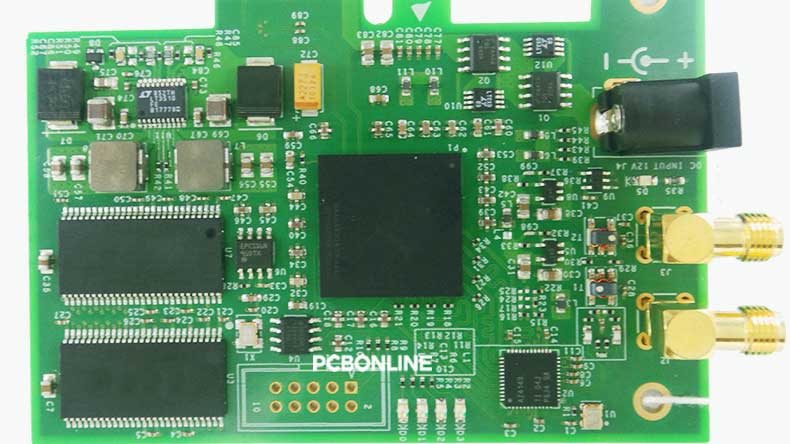
Electronic Assembly Meaning
In general, electronic assembly is a manufacturing process of assembling electronic components on a printed circuit board (PCB) to make it a modular PCBA, and the PCBA can be further processed to be a final product or system.
Electronic assembly services are contract electronic assembly manufacturing, including EMS (electronic manufacturing services), ODM (original design manufacturing), and contract electronic assembly for OEMs (original equipment manufacturing).
If an electronic assembler provides only custom PCB assembly to assemble electronic parts, and its client maintains R&D, this electronic assembly mode is contract electronic assembly for OEMs.
If the electronic assembler provides R&D and electrical part assembly, the electronic assembly service is original design manufacturing (ODM).
If the electronic assembler provides electronic parts, product R&D, PCB design, enclosure design, and one-stop electronic assembly manufacturing to create final products or systems, the electronic assembly is EMS.
No matter what kind of electronic assembly services you are looking for, electronics assembly means assembling electronic parts on printed circuit boards to make them PCB assemblies, modules, or systems.
Video of Electronic Assembly
The electronic assembly manufacturing video below shows how the one-stop PCBA manufacturer PCBONLINE assembles electronic parts on PCBs to create PCBA electronic assemblies.
Electronic assembly finds application in almost every piece of technology that surrounds us in our daily lives. For instance, an end design of an electronic assembly is used in your smartphone, in your pocket, or on any desktop computer.
In this article, we will review the whole electronic assembly process, so make sure to stick around.
Part 1: The Process of Electronic Assembly Manufacturing
Electronic Assembly is the process of assembling electronic parts on a printed circuit board to make it a PCBA. Even the most advanced board will not be able to deliver functionality unless it has electronic components mounted on it. The mounted circuit boards are called assembled PCBs.
There are several main stages in the electronic or PCB assembly. The process includes inserting solder paste onto the board, component placement, testing, and inspection. These four stages of electronic assembly are the main stages required for the production of a high-quality entity. They have to be executed one after another in a specific order in the PCB electronic assembly.
PCB Fabrication
When the EMS manufacturer PCBONLINE receives your Gerber (a PCB design file), their CAM engineer will check it and contact you to discuss the details of your requirements.
![]()
After the design for manufacturing, PCB fabrication starts. No one can guarantee that an advanced PCB design is okay for bulky production, so PCBONLINE will manufacture the prototypes and test them. When the prototypes work, then the electronic assembler starts bulky fabrication.
Component Sourcing
While PCB fabrication, the EMS manufacturer PCBONLINE sources the electronic components for assembly.
Typically, the client ships confidential components and active components to the electronics assembler. Because the client wants to control the critical components' source.
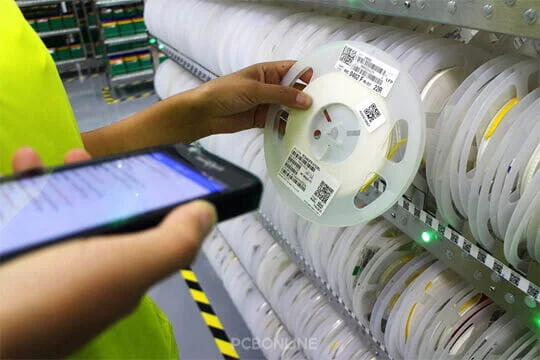
Electronic equipment assemblers such as PCBONLINE have in-stock passive components and part of active components in their component warehouse.
Relying on the EMS electronic assembly factory, PCBONLINE can take part in co-procurement with other large EMS from original electronic part factories. Besides, we integrate BOMs of different clients to buy in large quantities so that we can lower the unit price of electronic components.
If there are custom/weird-shaped components, PCBONLINE can contact a local factory to fabricate them.
PCB Assembly (SMT + PTH Assembly)
![]()
The whole SMT line is automated and is suitable for assembling fine-pitch electronic components.
The PCB contacts are printed with solder paste with the help of an SMT stencil in a solder paste printing machine.
Then it is solder paste inspection.
Next, the electronic components are picked and placed on the PCB boards.
If there's any IC of the BGA, CSP, or QFN packages, there is the X-ray inspection. Then the next step of electronic assembly is reflow soldering. Then it is the automated optical inspection (AOI).
![]()
By contrast, PTH assembly is not as automated as SMT assembly.
If the PCB has through-holes that need assembling electrical parts, the electronic assembler inserts the leads of through-hole parts into the holes and then puts the PCBA in a jig for wave soldering, where the liquid tin waves solder the gaps between the parts' leads and the hole walls. This electronic component assembly method is called PTH assembly.
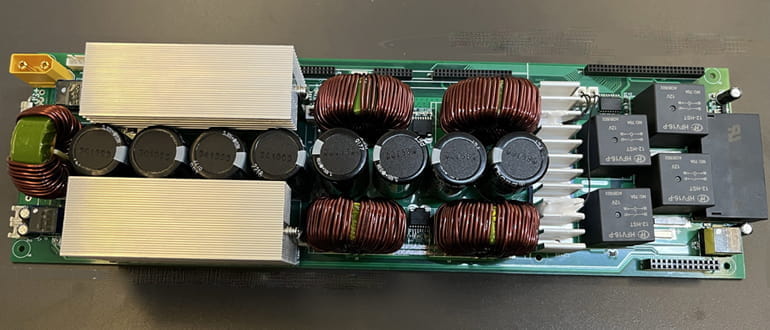
Testing and value-added
Testing is extremely important for electronic assembly manufacturing.
After PCB assembly, the assemblies need to pass various tests and inspections, including multi-meter testing, PCBA functional testing, thermal aging, application simulation testing, etc, depending on the electronics assembly project requirements.
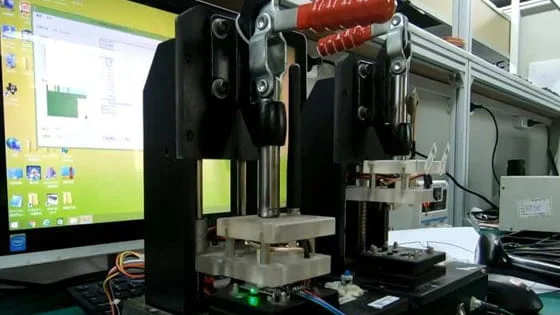
In the PCBA functional test, we put the PCBAs on a jig for a power-on self-test. If the PCBA functions, it works.
The value-added services in the electronic assembly include conformal coating, IC programming, further assembly to make the PCBA a system, enclosure manufacturing, and box-build assembly.
Feedback
During and after the process of electronic assembly, the input and output of the printed circuit board are monitored to ensure the rightful execution of its duties. Many failures and malfunctions are detected via this method, and the issues are resolved in the early stages, preventing further complications.
The perfect place for a feedback test is right after the soldering process because this is the part in which most of the issues are occurring. This way the defect is detected quickly and resolved before the next step of the assembly process.
Keep in mind that the process of electronic assembly is simplified as an overview in this article and there are a lot more details that are taken under consideration by manufacturers when assembling printed circuit boards. High-end developers are using optimized methods in which the cases of failure are minimal and the quality is a top priority.
Part 2: Technologies Used in Electronic Assembly
The process of electronic or PCB assembly includes several different approaches, including SMT, PTH, and DIP.
SMT - Surface-Mount TechnologyAs we discussed, SMT, surface-mount technology is a method in which the electrical components are mounted onto the surface of the printed circuit board (PCB). The component itself is mounted in an action referred to as a surface-mount device (SMD) with an SMT stencil. The electronic components of SMT are often smaller than its through-hole competitors because in most cases they don't have leads and even if they have, they are smaller.
![]()
PTH - Through-Hole Technology
PTH or DIP is another mounting scheme, used mainly for electronic components. This method uses leads on the components that are inserted through the holes and pre-drilled on the printed circuit board. The pads on the opposite side are soldered either by insertion mount machines or by hand.
Part 3: Best Electronic Assembly Services Are Here
If you are looking for reliable PCB manufacturing with high standards and quality of work, PCBONLINE is a global electronic group with 20+ years of experience in PCB fabrication, assembly, and EMS solutions.
They have a world-leading quality management system, focusing on advanced PCB manufacturing and assembly. This is the best physical and online electronic assembler with the lowest prices on the market.
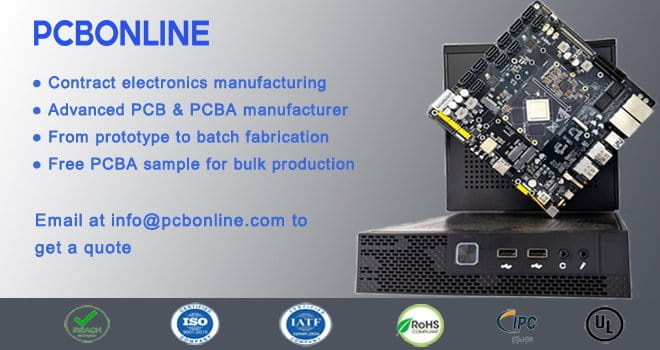
With their years of experience, PCBONLINE has become a large technology-oriented team with 60+ software developers, 45+ member hardware department, and 500+ senior technical engineers. They have fully automatic intelligent equipment and an independent developing team, constantly investing in R&D and technical training.
Their innovative workflow includes IMS intelligent manufacturing system, SCM in-time delivery, and traceability to ensure product quality and lean manufacturing. If you are interested, they provide an online quote option for free, so if you have any concerns or inquiries, make sure to get a quote on their website.
Electronic Assembly SolutionsHigh-end PCB electronic assembly manufacturer delivering customizable solutions and good quality. Here are some of the efficient options when working with PCBONLINE.
- Low-Volume PCB Assembly - One of the PCB electronic assembly solutions provided by PCBONLINE. It refers to 5 to 2,000 pieces that require soldering parts. It is one quick and reliable way to electronic sample production and testing. This is an optimal solution with a quick turnaround and a small volume.
- High-Volume PCB Assembly- You can have both, consigned high-volume PCB assembly and turnkey service. If the demand is more than 10,000 pieces of PCB to be assembled then this is the workaround for you. It includes soldering components, SMT stencils, AOI inspection, DFT checking, and more.
- Turnkey PCB Assembly - This is a process that enables you to complete assembly and manufacturing in one place. If time is a valuable resource to you, the turnkey PCB assembly is the optimal solution, as you don't need to worry about anything. One-stop PCB service is designed to provide reliable components, full assembly, and delivery packaging. The turnkey PCB assembly involves all possible steps that certain projects might require. Starting from the fabrication to the assembly process passing through all necessary details covering every aspect and delivering high standards.
Part 4: What Does an Electronic Assembler Do?
The electronic assembler has a wide range of meanings depending on your duties. You could be assembling electronic parts such as circuit boards, and mounting them into larger assemblies or casings. They can further assemble the PCBA to be a box-build or end product.
Electronic assemblers also ensure that the installation and soldering are properly performed as well as electric wiring. An electronic assembler even troubleshoots equipment in case it is returned to service or fails.
With the innovation of electronic components, they have become smaller and smaller. Most of the processes are ones with automatization equipment that require a human touch to perform as per the requirements.
An electronic assembler has excellent knowledge of the equipment responsible for the major electronic assembly. The assembler's duties are depending on the field of work and focus area. One thing is for certain, electronic assemblers have extreme dedication and precision towards outstanding quality in production.
Bottom Line
In general, when most people hear of electronic assembly putten this way, they are referring to a collection of electronic parts assembled into a larger unit. As we already discussed in this article electronic assembly would be printed circuit board and the implementation of electronic components via technical processes with substages. Electronic Manufacturing Services - (EMS) is another way that we could describe electronic assembly including design, development, test, distribution, and repair services.
Keep in mind that the process is far more complicated than in this overview. There are many details and complex issues that occur during the process of electronic assembly, which suppliers are optimizing every day towards a lower volume of failure. By working with the one-stop electronic assembler PCBONLINE, you can enjoy one-on-one engineering support throughout your project, and the PCBs/PCBA/box-builds are certified with ISO, IATF, RoHS, REACH, IPC, and UL standards.
- What is Electronic Contract Manufacturing - Complete Guide in 2024
- What is EMS Manufacturing - Comprehensive Guide in 2024
- PCB Assembly Guideline: What to Prepare Before PCB Assembly?
- What is a PCBA and How to Create Your Custom PCBA? [2024 Update]
- What is Box Build Assembly and How Does It Benefit Your Business
Related Content:




